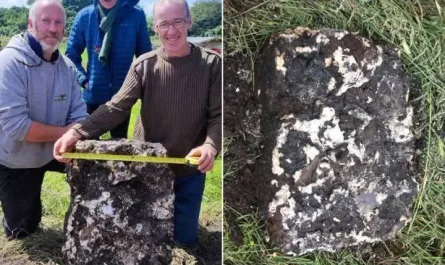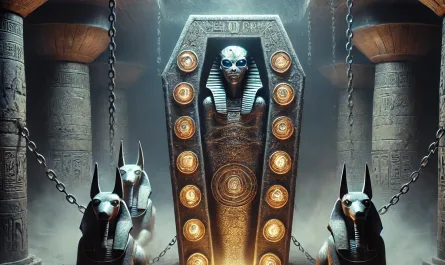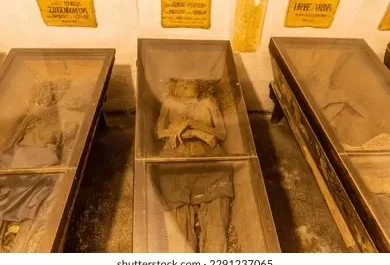I’m a lover of ancient history, and I’ve grown up with mental images of the Roman Empire, the Athenian democrats, and the expansive might of successive Persian empires. And yet, somehow, the Scythians have always been something of a footnote in my memory of learning and discovering the history of the distant past. The closest I ever got to these most ancient nomads was through Herodotus, the ancient Greek writer who is most commonly referred to as the “father of history” but is probably more deserving of the title, “father of lies”. Herodotus did what no-one before had (apparently thought) to do; write history, through accounts given by living people, criticised and arranged into a legible narrative. Unfortunately for facts, Herodotus seems to have been particularly excited by the more unusual stories out there (emphasis on stories), and so though he professed to be recording what he was told, regardless of his personal beliefs, a little criticism could’ve been beneficial. For a book called “The Histories” to contain mentions of cyclopes and griffins, and giant golden ants in Persia, is more than faintly ridiculous. The Scythians get a strange account in Herodotus, who talks of a vast capital made of wood, filled with people who worship Grecian gods and speak a fusion of Greek and (apparently) Scythian. Given his track record, I know where I stand with this, and everything I saw at Scythians: Warriors of Ancient Siberia pointed to Herodotus having a much under-used skill at storytelling and much over-used weakness at history.
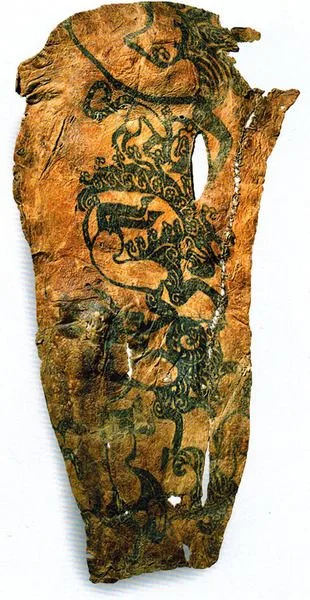
Warriors of Ancient Siberia is a unique exhibition, and so even if you’re not tremendously keen on ancient history or simply have no idea who or what the Scythians were, I urge you to go and see it, if only to give money to the British Museum. I feel I must begin with some criticism, and to explain why this is a strange criticism at all: I came out feeling that I’d been missing something along the way. If you’re being brutal about the exhibits, you’d say that it’s all horses and gold, horses and gold, mummified tattoos, horses and gold. Well, the Scythians loved their horses, and everybody loves gold, so I can’t hold that against them. But to explain: until the reign of Peter the Great and his dispatching of expeditions into Siberia to collect artefacts, we knew very little about how the Scythians lived, beyond what we could reasonably speculate. Now, at this exhibition which sees some of these artefacts leave Russia for the first time, we discover just how unlikely it was that we should ever know as much as we do now. The Scythians occupied a vast tract of land across the Eurasian steppe, which runs from eastern Europe to the Altai mountains, between deserts to the south and taiga to the north. As nomads, the Sycthians moved around a lot (hence the love for horses), and they buried their elite dead with luxurious grave goods. Unsurprisingly therefore, they’ve been pretty well plundered over the centuries but it is in spite of the geography of their homeland that the artefacts you see at Warriors of Ancient Siberia are as exquisitely preserved as they are. Wintry conditions, permafrost and visible burial mounds all took their toll on the availability of archaeological remains, and so I understand why the objects on display are as “horses and gold” as they are. But to get hung up on that is, I think, to miss the point.
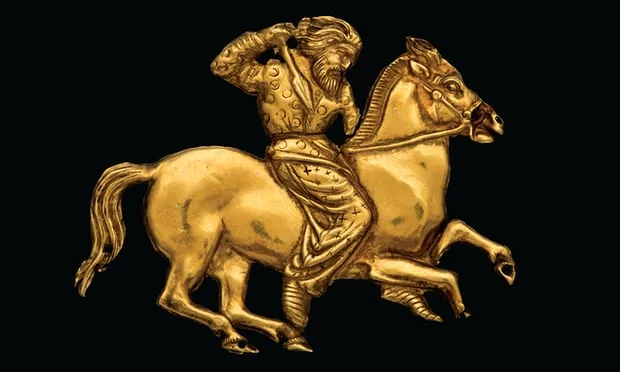
The greatest pieces in the exhibition are, beautiful jewelery aside, the mummified head and shoulder/arm skin (with tattoos!) of a chief found at Pazyryk, the incredibly colourful tapestries (including what the exhibition describes at the world’s first rug), a sheep’s fleece that looks as though it could’ve been shorn yesterday, a couple of lumps of genuine Scythian cheese, and a late Scythian’s mummified head, face obscured by a clay death mask, whose features we can now see with modern imaging technology. While the first artefact I mentioned is by far the most striking, I have to mention the quality of some of the fabrics. You can see everything, from children’s clothes, to wool, sinew and leather overcoats at trousers (which the Scythians were quite unique in wearing at the time), the aforementioned rugs, tipi coverings, belts and bags. Some of the photography of unearthed tombs taken at the time shows skeletons, lying in the foetal position with a halo of golden trinkets around them. In the wet conditions fabrics largely don’t survive, but their propensity towards decoration makes the reconstruction of their clothing possible. The richest were absolutely fabulously garbed, and one cabinet in particular displays upwards of fifty little gold appliqués that would’ve been stitched to a jacket, arranged in a beautiful flowing pattern, and I can only imagine the feeling of finding its decomposing owner, with no sight of the jacket itself, surrounded by the shining remains of his wealth.
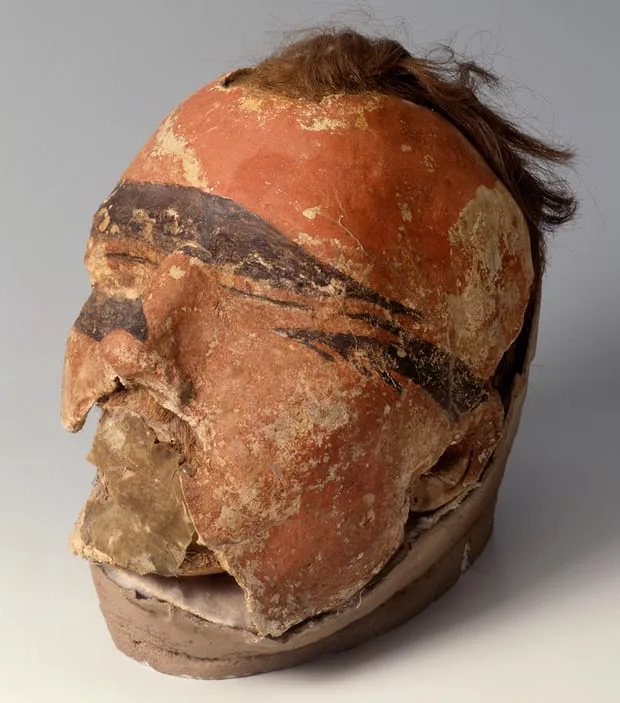
While I did say I felt like I didn’t get a strong impression of who the Scythians were as a people (beyond horses and gold, of course), I did get little snapshots. One display shows a small tipi with a bowl of hemp seeds; the Scythians would heat stones and place the hemp seeds on them, and inhale the resulting fumes. Herodotus says it made them “howl with delight”. I’m sure they did. Their jewelery, in the “animal-style art” tradition featuring a variety of animals, predators and prey, points to a tripartite view of the natural world: a sky world of birds and flying creatures, a terrestrial world of mundane animals, and a subterranean world of chthonic beasts. Later items in the exhibition, textiles in particular, speak to the extent the Scythians got around, and we know they traded and intermingled quite extensively with their settled neighbours in Greece and Persia over the six hundred years of their prominence. As is the case with so much archaeology, it will always be an incomplete picture we have of these people, but with some judicious drawing of conclusions, we can at least know quite a bit more than what lies beneath the surface.
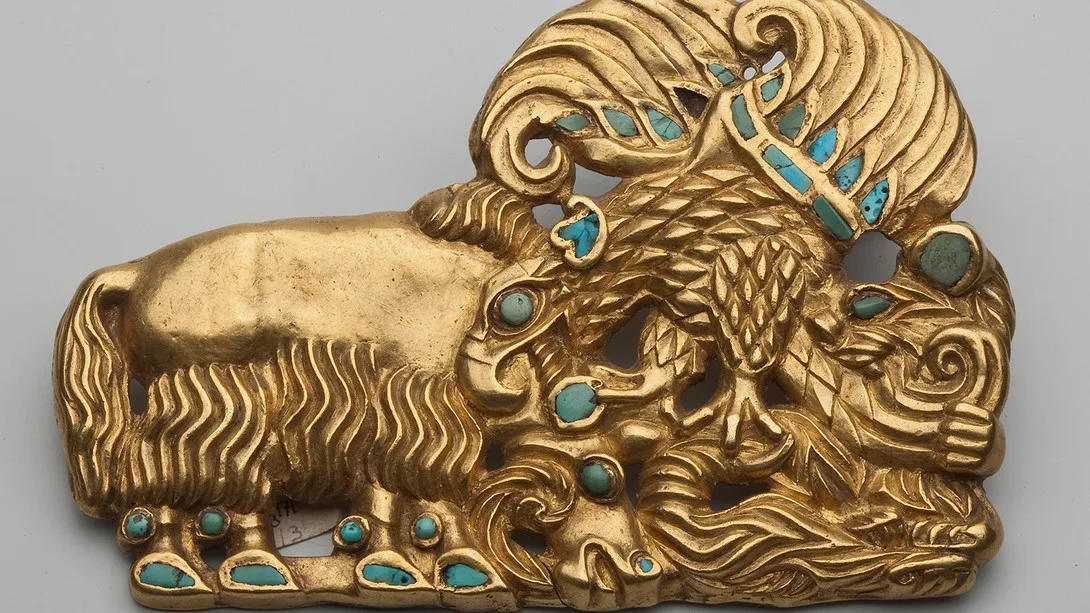
If I have a single criticism of the exhibition, it was that it feels a little unstructured. Horses and gold abound, of course, and with so many articles of jewelery and horse-riding paraphernalia it’s hard to turn the exhibits themselves into a coherent experience. Thinking about it afterwards however, I did wonder if there wasn’t another way to induce a little narrative to the whole affair. Herodotus may have penned quite a few untruths about the Scythians, but he nevertheless wrote more about them than any other contemporary source and so I think it would’ve been to the exhibition’s benefit to include some of what he wrote, if only as part of an introductory structure: “Herodotus says this about Scythian life, but the archaeological evidence tells us this”, that kind of thing. As it was, it was a bit of a meander through the exhibits without a great deal of connection from one to another. That so many people seemed not to follow what in my mind felt like the “track” one follows at the exhibition, is some manner of evidence for this. Ultimately however, the lack of a neat narrative for the exhibition is a product of the harsh and artefact-destroying geography of Siberia, the tremendous distances over which the Scythian people ranged, and centuries of plundering at the hands of tomb-robbers. Therefore, I can’t hold it against the British Museum too much For a prospective visitor, I urge you to simply explore the exhibits, one by one, and appreciate just how incredibly unlikely it is that we should ever have been able to see what we now can of the forerunners to the Huns, the Sarmatians and the Mongols.
Scythians: Warriors of Ancient Siberia – 4.5 out of 6. Some beautiful and unexpectedly treasured finds that, despite their own quality and magic, could’ve done with a little more curation.


